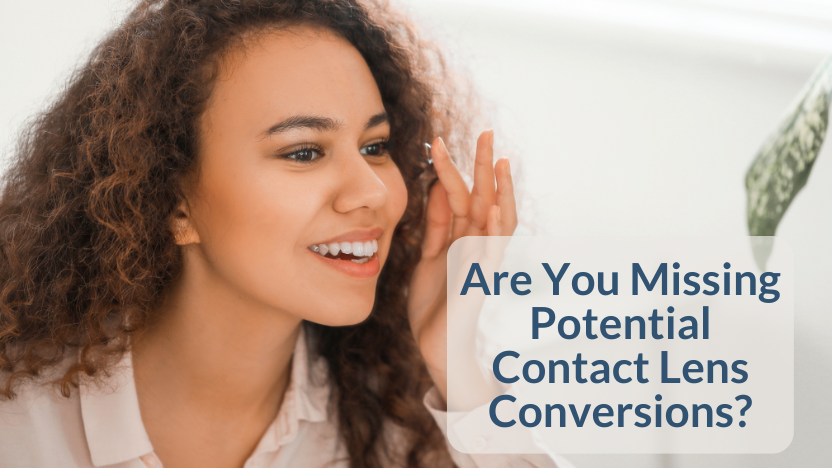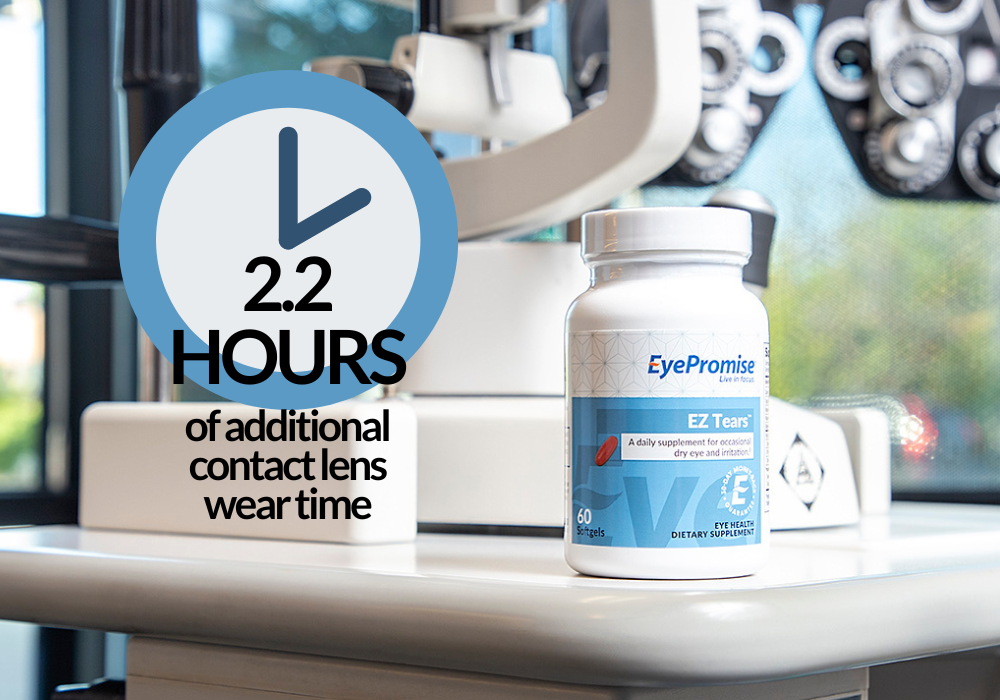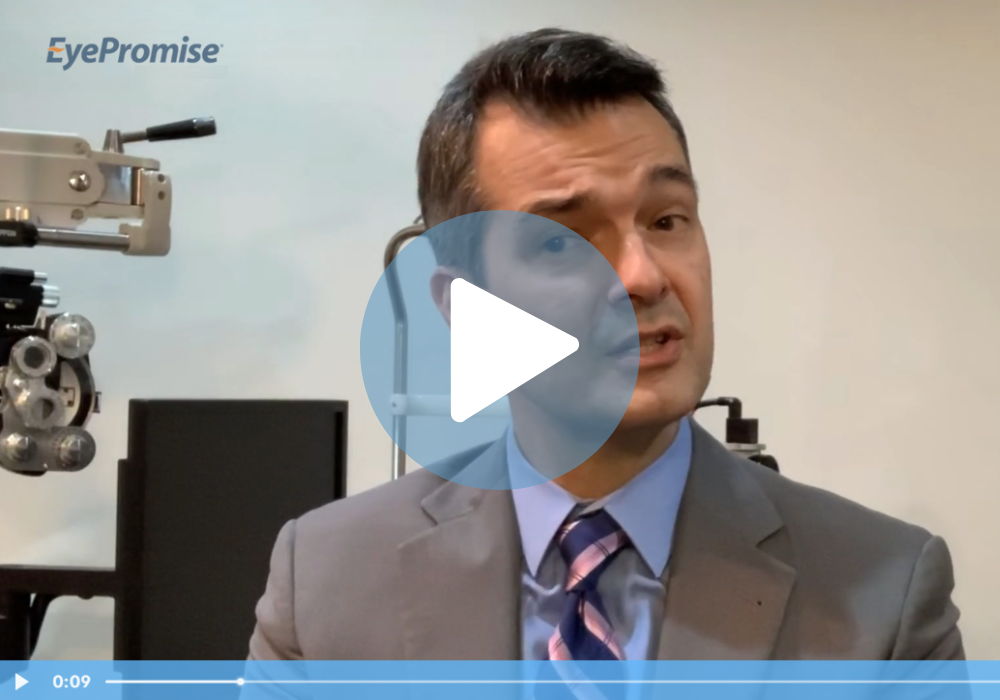Are You Missing Out on Contact Lens Sales?
Posted by EyePromise on Jun 20th 2024
Many people prefer to wear contacts over glasses for a multitude of reasons. Some, however, prefer the opposite, and some still haven’t attempted the switch. According to recent research discussed in an article on Review of Optometric Business, those who have never tried contact lenses or have dropped off their lens regimen are far more interested than many ODs realize. The short of it: you might be missing out on potential contact lens revenue.
The Research
The Contact Lens Institute (CLI) conducted their research with over 1000 vision-corrected adults spanning glasses-only wearers, contact lens wearers, and contact lens dropouts. The intention behind their report titled “Beyond Vision: Behaviors to Attract New & Returning Contact Lens Wearers” is to share actionable insights that are designed to “help practices thrive.”
Within the document, the CLI shares infographics, takeaways, and actionable lists for practitioners to utilize in their day-to-day. Within the report, there are a few common ideals we believe to be pivotal.
Bridging Communication Gaps

Of those who strictly wear glasses, nearly half (47.8%) indicated they’d be interested in trying contacts. That said, many are waiting to hear the suggestion from their eye doctor, and only 10.5% of those glasses wearers said that their doctor recommended them. Some patients may have been told at one point that they’re not a candidate for contacts or have had an aversion to a specific contact modality, but technology improves every year. These technological advancements allow for more patients to try and use contact lenses than ever before.
Identifying candidates for contacts can help lead to an increase in trials and, potentially, an increase in contact lens wearers. Here are 6 ways to encourage contact lens consideration:
- Frame them as a potential solution that may not be top of mind. If patients are tired of their glasses sliding down their noses, offer contacts as a more “permanent” solution.
- Review modality options best aligned to lifestyle choices. Again, technology has come a long way, and there are many kinds of lenses for patients to try.
- Offer a demonstration in the office. Nearly two thirds of patients (65%) who have a demo end up getting a lens evaluation.
- Explain that contacts are an option, but not the only option. Patients can switch back to glasses when appropriate (or at any time).
- Proactively educate about potential challenges and how to overcome them. Patients are less likely to drop out when facing challenges they’re prepared for. See the next section for suggestions.
- Share stories of personal and patient successes. Hearing how others’ experiences went can help get patients on board with a trial. Examples include:
- Sharing what type of contact lens you wear and why
- Allowing staff to try different modalities and share their experiences
- Knowing the latest technological developments and sharing them with patients
- Asking happy patients to share their experiences
Understanding the Obstacles Outside of Your Practice
As mentioned, sometimes there are aversions to contact lenses that can’t be addressed by practice protocols. Proactively approaching these challenges in conversation can help to dispel misconceptions and convert glasses wearers to contact lenses. We bet you can guess the most common…
If you thought, “I don’t want to touch my eye,” you’d be right! This challenge is difficult to overcome within the practice, but you can offer some desensitizing exercises for the patient to try before coming back in for a lens evaluation:
- Instruct a patient to touch their eyelashes, upper and lower eyelids, and then the white part of their eye. Make sure to stress that they should have clean hands!
- Tell patients to try and practice putting in contacts without the lenses. Again, with clean hands!
- Have patients sit in a relaxed position and slowly bring their fingertip toward their eye while using their other hand to hold their eye open as if putting in a contact lens. Did we mention that they should have clean hands?
The second most common hurdle for contacts is the cost, so having multiple pricing options is a great way to offer the opportunity for lenses to more patients. The third most common reason for patients to not use contact lenses is occasional dry eye. Dry, irritated eyes make for an unstable landscape for the lens, which can often exacerbate the symptoms.
To help create a balanced tear film and a healthy ocular surface, prescribe EyePromise® EZ Tears™, a daily eye health nutraceutical that’s been clinically demonstrated to improve:
- OSDI scores (38%)
- Tear break-up time (TBUT) (45%)
- Conjunctival staining (50%) and corneal staining (33%)
- Tear meniscus height (50%)
- Lid inflammation (40%)
Relief occurred fast, with some patients feeling better as early as one week into the trial, and improvements continued over the course of the 8-week study. Additionally, a contact lens comfort trial saw increases in the average contact lens wear time by 2.2 hours. Learn more about this powerful nutraceutical.
Understanding the Benefits According to New Contact Wearers
As we’ve mentioned, some patients want to hear other patients’ experiences with contact lenses. According to the CLI’s research, here are the most motivating benefits that got new contact lens wearers to convert:
- Freedom from glasses. When you become used to a routine, it’s difficult to see the flaws. However, once a patient no longer needs to routinely clean their glasses throughout the day to see clearly, they may find that they enjoy their newfound freedoms.
- Personal appearance. Some people like the way they look in glasses, while others feel more confident without them. Contacts provide an option for those looking to change their appearance and can offer a boost in confidence.
- Ease of use. Glasses maintenance can be cumbersome, so the ease of contacts can add to the benefits.
- Better comfort. Not worrying about glasses getting broken or falling off can offer more day-to-day comfort for patients.
- No visual obstruction. Having a full visual range can be a huge improvement over glasses. Additionally, contacts don’t come with the visual glare or distortion that may accompany glasses.
- Fitness/sports/physical activity is difficult with glasses and usually requires some sort of sports goggles. Contacts are a great alternative. Some professions are quite physical, as well, and could be better handled without the restrictions of glasses.
Winning Back Dropouts
There are many reasons for patients to drop out of their contact lens regimens, but understanding the motivators that will get them back is more important. The CLI’s report indicates that the number one motivation for contact lens dropouts to reengage is awareness of new advances/technologies. A pair of trial lenses to take home from the appointment is the second motivator for patients who have dropped their contacts.
Here are 6 suggestions to help you reengage those patients who may have dropped their contacts:
- Send a survey to better understand what made them drop off to begin with.
- Share what’s new in terms of technology, modalities, and benefits. This speaks to the #1 motivator.
- Offer take-home trials, which address the #2 motivator.
- Address specific concerns. It’s hard to do this without taking step 1, but once you know why they dropped, you can help address concerns with customized follow up.
- Personalize your recommendations. Make sure you’re not suggesting the same brand/modality/etc. that drove them away in the first place.
- Follow up and share product updates, promotions, and additional relevant information that applies to any of the above.
If you’re looking for ways to increase your contact lens capture rate, these suggestions can help you do that. If you’re looking for a solution for occasional dry eye, regardless of contact lens use, EyePromise EZ Tears can help. Learn more about it from Dr. Mile Brujic in this short video.



